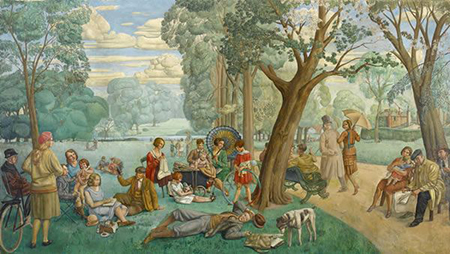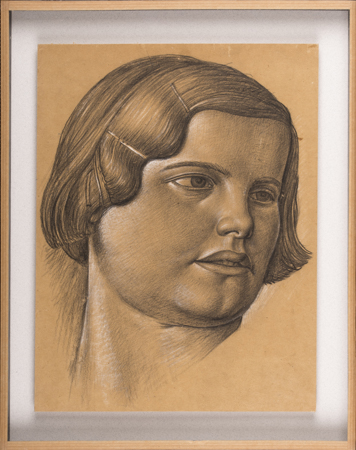
Hyde Park was Lewis's entry for the 1932 Rome Scholarship in Mural Painting. Rothenstei, Lewis's tutor at the RCA was convinced that Lewis, having been runner up two years earlier, was capable of winning a scholarship. Still under the age of 25, by a matter of weeks, he was still just eligible to enter, but this would be his last chance.
Accordingly Lewis asked the Director of Education at Newport, where he had recently accepted the post of teaching assistant, for three months off:
I thought I would never get the chance to enter the Prix de Rome again but Rothenstein kept writing letters to me and encouraged me to enter adding, "you;ll win next time".
Lewis prepared initial studies and cartoon at home, Llwyn-On, and then moved to London to complete canvas during first few months of 1931. He knew Hyde Park well from his days at the Royal College of Art - he loved going there to sketch . The subject - a metropolitan scenescence - makes an interesting pendant to his Allegory of two years earlier. These two pictures might be seen as a discourse between Town and Country. His choice of an overtly modern subject might also have been to answer his critics who found that in Allegory "his field workers are much more conscious of Rome than of their legitimate business….”. The characters in Hyde Park show no such detachment. The painting gives a remarkable account of a summers day in central London. Stanley resisted criticism from his fellow student and fiance, Muriel Pemberton, who interfered with the painting insisting he should be more modern in his approach. Similar pressure was applied by Stanley 's landlady and Aunt, Sally Taylor, herself a painter whose art took you beyond the normal world - abstract and expressionism and so on. Stan you might as well be a camera she said sniffly when she saw my studies of the painting. And that is it really, I felt an inner force burning to capture my world around exactly as I saw it in the reality that it was.



